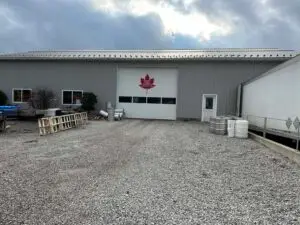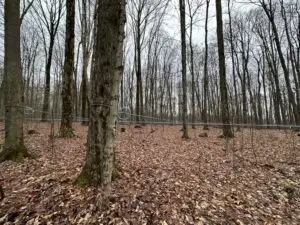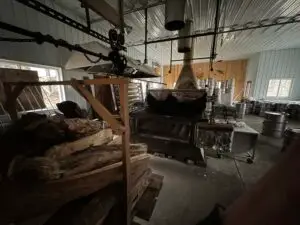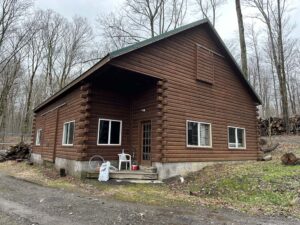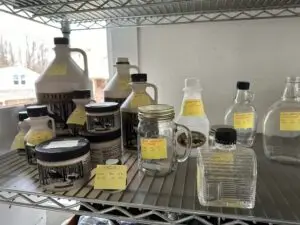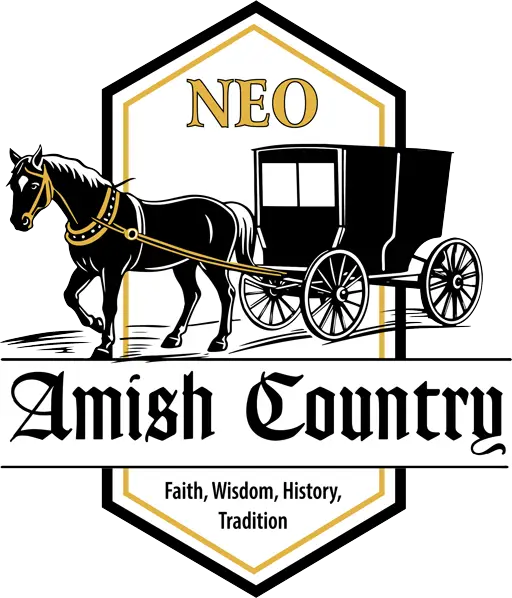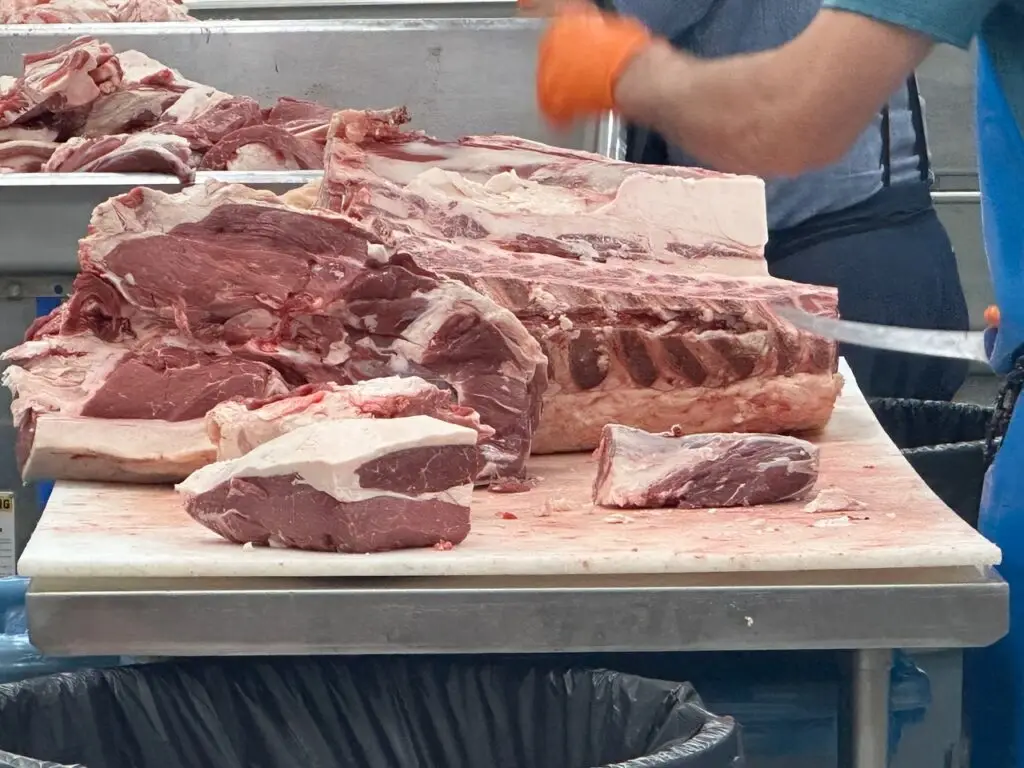By Kim Breyley
In 1952, Erwin Gingerich Sr. purchased 126 acres on Georgia Road south of Middlefield. “In the mid 60s he began tapping trees totaling 1,200 buckets,” says grandson Erwin III. “In the beginning, he placed a collection line in the center of the woods feeding to the sugar house which was closer to the front of the property.” Erwin Sr. was a carpenter by trade.
“In the mid-70s, Grampa had a heart attack,” continued Erwin III, “so he couldn’t continue making syrup. He passed away in 1987 and in 1988, my dad, Erwin Jr. and his neighbor started making syrup again.”
Today, the Gingerich Family Sugarbush is operated by Erwin III and his brother Marvin; their brother Paul was a partner until this past year. For the past 20 years, the three brothers have supplemented their family’s income with the maple syrup business and worked full-time as carpenters. In 2019, Erwin III decided it was too demanding to run both businesses well and chose the maple business solely, and then last year, Marvin came into the syrup business full-time as well. This coming spring, they will draw sap using approximately 35 miles of plastic tubing/5,200 taps. (more than 2,000 trees)
“We now have two collection points,” says Erwin III. “One is at the front of the property towards the road where we have 700 taps that slope away from the sugar house. We have a vacuum pump to extract sap for those, and we have a collection point by the sugar house for the remaining 4,500 taps.”
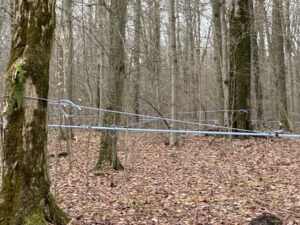
The sap collects in two 1,300-gallon tanks from there it runs through a filter and then is pumped to an 8,300-gallon tank. From there, it travels into a reverse osmosis (RO) machine by which the process increases the sugar content from approximately 1 percent to 8 percent. The run-off water is pumped to a 1,200-gallon tank and saved for washing and rinsing the RO at the end of the day. The sweet 8-percent concentrate pours into one of two 1,500-gallon tanks behind the sugar house. From there it gravity feeds into the evaporator. A “Steam Away,” which is a sap pre-heating and evaporation system, sits above the evaporator and increases the boiling point 50 to 75 percent, thereby decreasing boiling time and wood consumption.
In the fall of 2001, the Gingerich’s replaced the tubing their father had installed in 1988. At the time, tubing installers were rare in the area so the product supplier, Lapierre, a Canadian company based in Quebec, provided a team of French-speaking Canadian experts to help. Because of the increase in taps and tubing, the Canadians teased and laughed with thick French accents, “You’re going to be boiling all de day and all de night.”
“And they were right,” said Erwin III. “That spring of 2002, we had to manage 600 more taps (4,200 taps to 4,800) plus we had a better vacuum pump. We scrambled to get more tanks and couldn’t boil fast enough; our tanks were overflowing.” At that time, they had not yet purchased the RO system. “We just had a 6×14 evaporator with the Steam Away. We could boil and evaporate about 500 gallons per hour. Twice that year, (2002) we had such long runs,” says Erwin III. “One time, we boiled for 72 hours straight and later that year, we boiled for 76 hours.
Dad and I were a team, and brothers Paul and Marvin worked together, each team taking 8-hour shifts with a 2 a.m. shift change.” They were praying for a freeze, and after it finally did freeze, it took 24 hours to boil everything they had collected. “That year, we boiled a total of 357 hours, and we made 1,500 gallons of syrup,” said Erwin III reliving the exhaustion.
They did not purchase an efficient RO system for another several years. “One of our customers was not in favor of the RO; he felt it would compromise the quality of our syrup. So, we bought another used 6×16 evaporator with the Steam Away. Later we found out our anti-RO customer had purchased an RO system. We invested in the RO system in 2008.”
For many years the brothers manned a store offering maple-syrup production supplies. In 2023, they sold that segment of the business. “It was more than we could handle,” says Erwin. “We have also taken on the business of installing tubing and see more opportunity for this in our future.
There is a great deal of off-season work as well, between collecting, chopping, stacking 30 cords of wood, flushing, pulling and tying off spiles, and maintaining tubing–the work never ends. This past August a Tornado touched down in Middlefield and the high winds knocked out a 100 x 1,000-ft. strip in the Gingerich sugarbush. “We lost 54 trees (47 maple trees) which means about 100 taps,” said Erwin sadly. “It was devastating. We still haven’t been able to clean it all up.”
The Gingerich’s price their syrup currently at $45 per gallon. One must wonder if all of the work is worth it. “I have had customers question the cost, suggesting it is high,” says Gingerich. “I just smile and ask them to come in and help for an hour or two–tapping, boiling, cleaning, chopping. They usually leave with a couple of gallons of syrup,” he smiles.
As for future plans, Erwin says they are pretty much maxed out on the property with 5200 taps. They will continue to install tubing and custom can the syrup for customers. The Gingerich’s have had syrup buyers in from as far as Alaska and have shipped as far as Hawaii. This maple business is truly a gem for Geauga County.
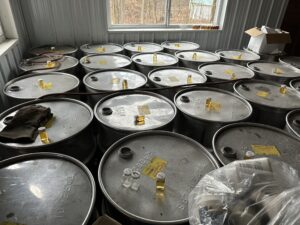
The Gingerich Family Sugarbush is located at 14875 Georgia Road in Middlefield. Call 440-834-8816 for more information.
